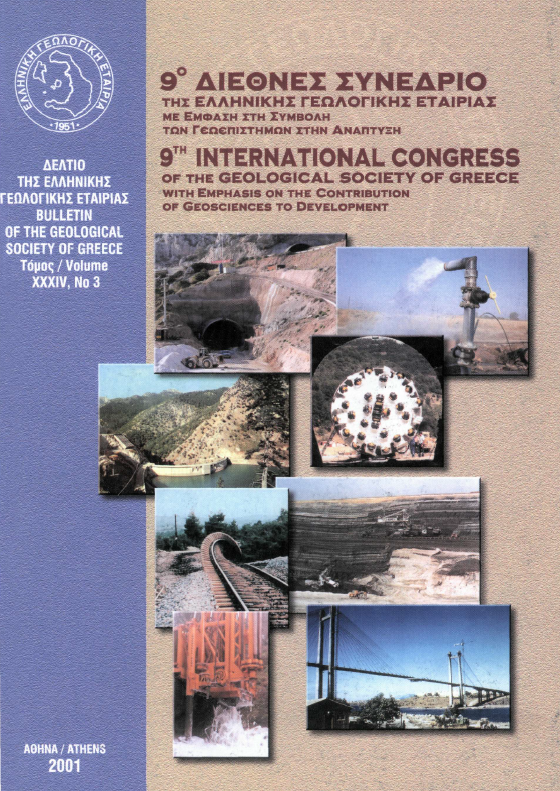PRIMUS BASIN - A MODEL FOR OIL EXPLORATION
Abstract
An extentional tectonic led to the formation of the basin along marginal listric faults. The fast subsidence created the frame for the accumulation of a thick section of miocene, pliocene and quaternary deposits amounted to 5000 meters and resulted to the good preservation of the organic matter as source for the oil generation. The existence of anticlines and other types of traps around the deepest part of the basin where the oil generation took place is another important factor for discovering hydrocarbons. The growth fault activation led to the formation of roll over anticlines in front of them. Stratigraphie oil bearing traps do also exist. The thick salt layers that were deposited during the upper miocene following the isolation of the basin from the open sea contributed to the reduction conditions in it. Moreover this salt cap rock holds the whole oil migration below it and prescribes the stratigraphie level for the prospects. The short distance between the generation area and the surrounded fault and statigraphic traps accelerated the migration and trapping of the hydrocarbons. The strong relief of the basin due to the fast subsidence led to the extend deposition of turbiditic sediments that form the reservoirs for the majority of the fields.The good knowledge of the geological evolution of the basin and the geochemical processes which take place states the best prepositions for a successful hydrocarbons exploration.
Article Details
- How to Cite
-
Proedrou, P., & Papaconstantinou, M. C. (2004). PRIMUS BASIN - A MODEL FOR OIL EXPLORATION. Bulletin of the Geological Society of Greece, 36(1), 327–333. https://doi.org/10.12681/bgsg.16675
- Section
- Energy Resources

This work is licensed under a Creative Commons Attribution-NonCommercial 4.0 International License.
Authors who publish with this journal agree to the following terms:
Authors retain copyright and grant the journal right of first publication with the work simultaneously licensed under a Creative Commons Attribution Non-Commercial License that allows others to share the work with an acknowledgement of the work's authorship and initial publication in this journal.
Authors are able to enter into separate, additional contractual arrangements for the non-exclusive distribution of the journal's published version of the work (e.g. post it to an institutional repository or publish it in a book), with an acknowledgement of its initial publication in this journal. Authors are permitted and encouraged to post their work online (preferably in institutional repositories or on their website) prior to and during the submission process, as it can lead to productive exchanges, as well as earlier and greater citation of published work.




